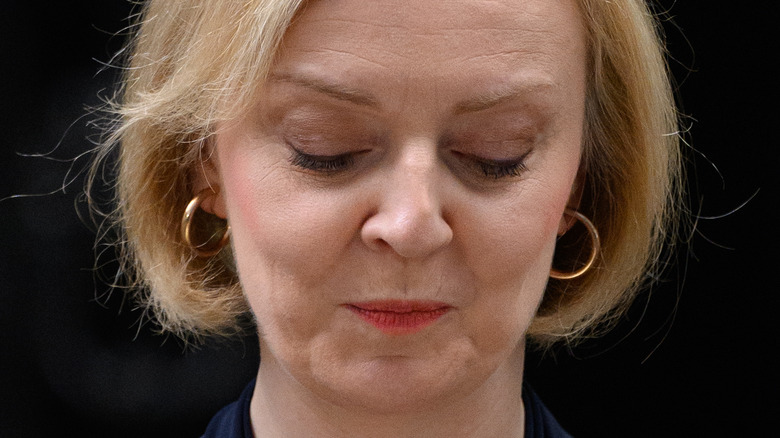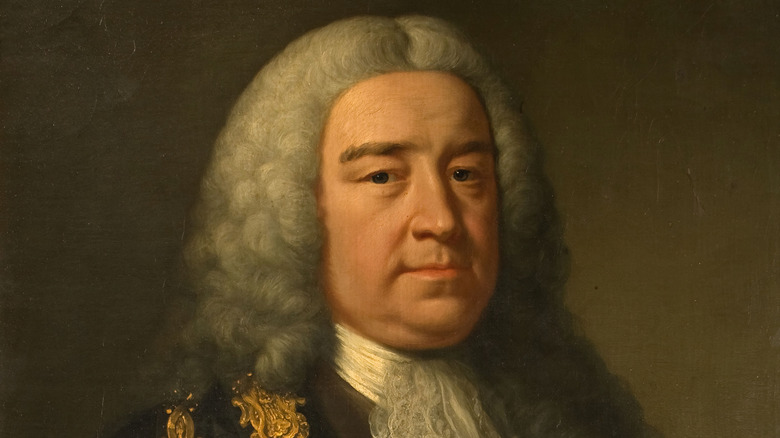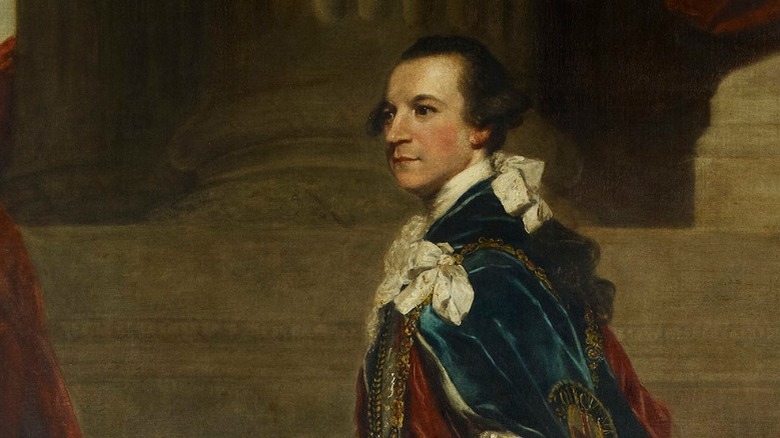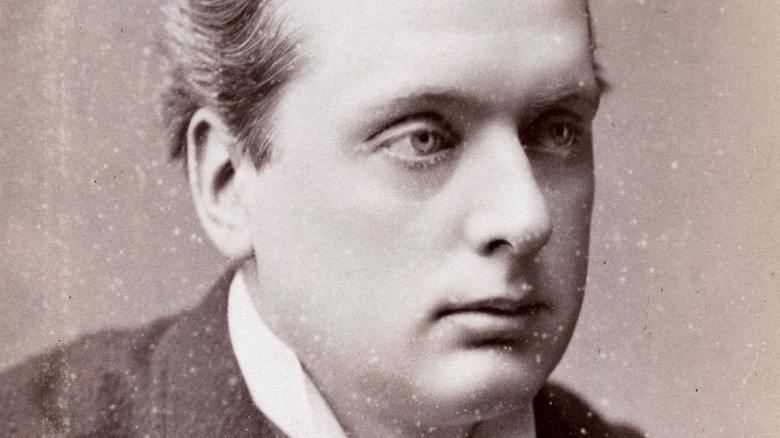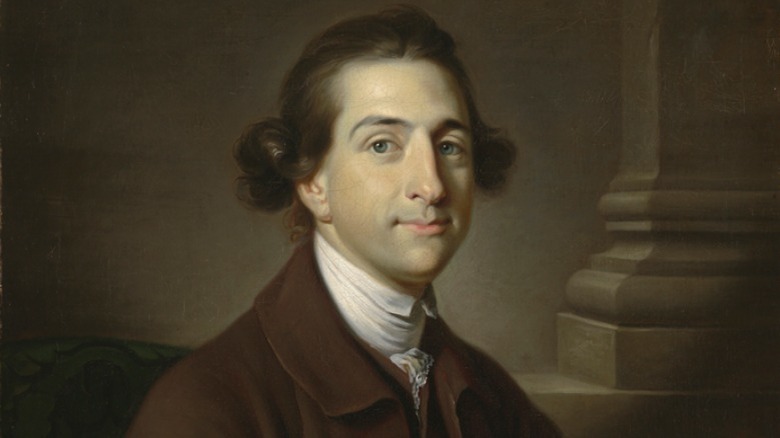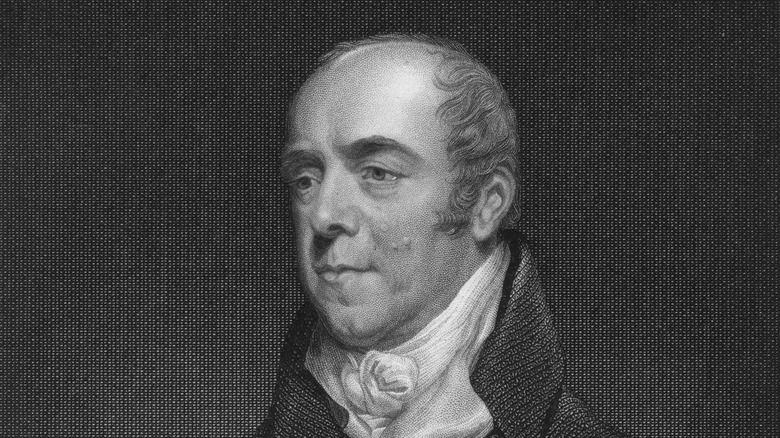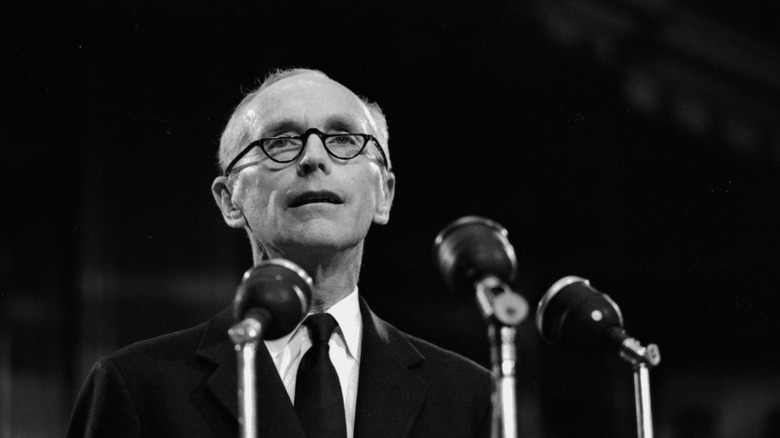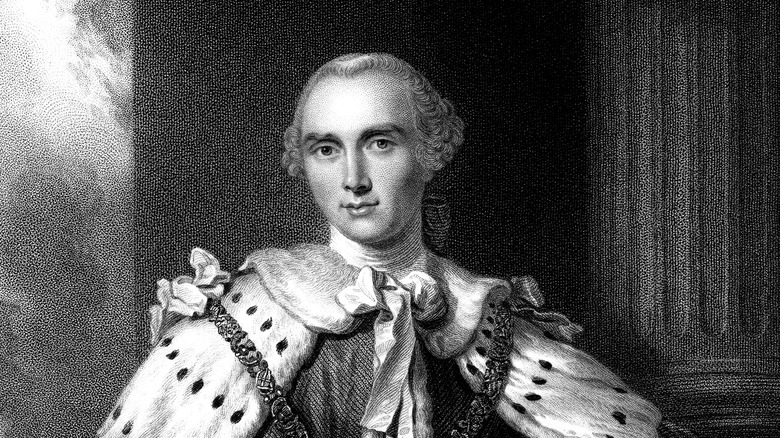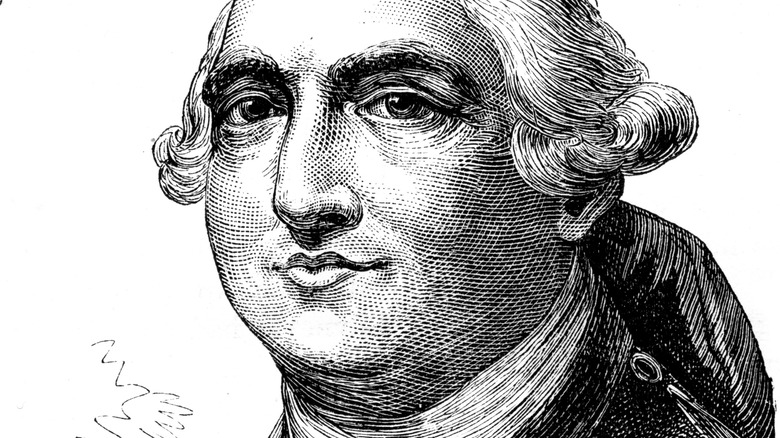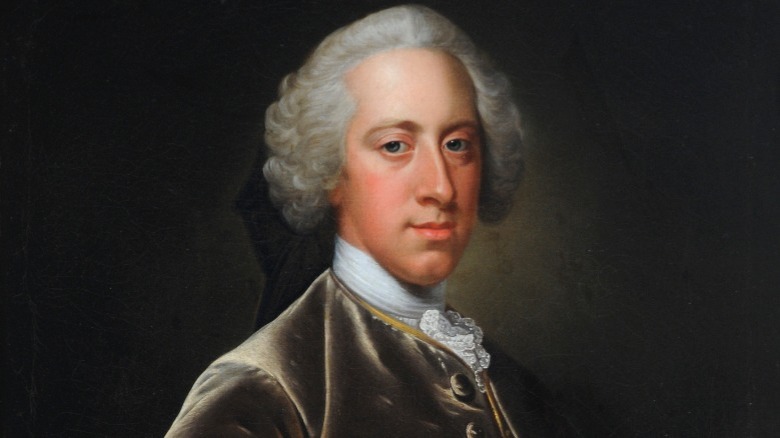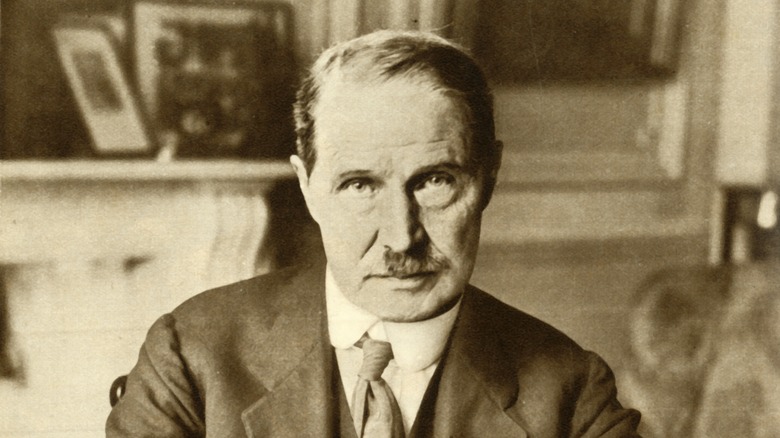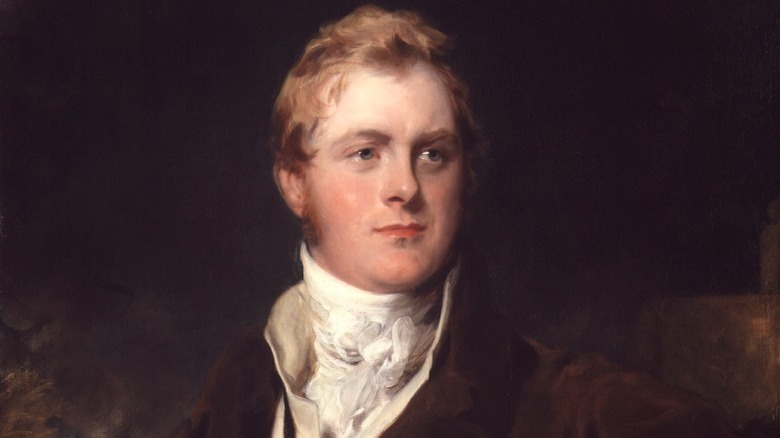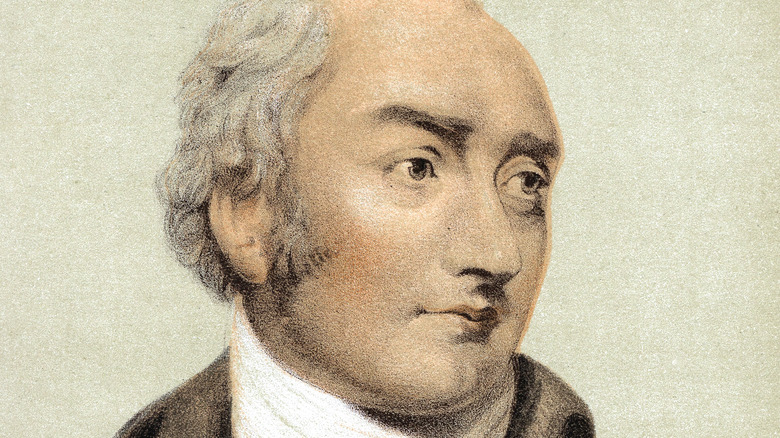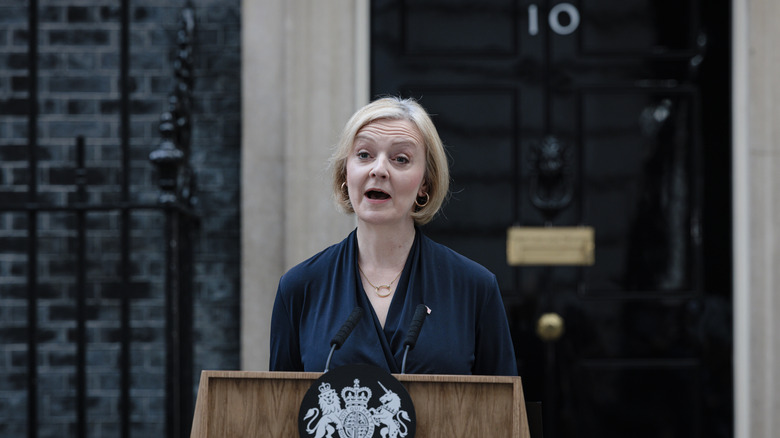The Shortest Serving Prime Ministers In UK History
For those in the United States and other countries whose governments do not operate on parliamentary systems, it might be surprising that prime ministers can come and go so quickly. Unlike presidential elections, parliamentary elections can happen at almost any time, and in between those elections the party in charge can change who leads their party — thus changing the PM — without involving the electorate at all.
Australia famously went through a period of rapid PM changeover in the recent past, with the country cycling through six leaders in the 10 years between 2010 and 2020. But that seemed like a distant memory by 2022, with everyone's eyes on the disaster happening in the U.K.
After the shock resignation of Liz Truss on October 20, 2022, The Scottish Daily Express compiled a list for their readers of the shortest-serving U.K. prime ministers ever. So where did Truss come on the list? Who were the others who didn't last long at the helm? And why exactly did they stop being prime minister? Read on to find out.
The Earl of Wilmington
As with many of the people on this list, Spencer Compton, Earl of Wilmington, a.k.a. Baron Wilmington, had way too many names and titles. According to Britannica, he lived from around 1673 to 1743.
On paper, the earl looked like a pretty good choice to be one of the earliest prime ministers, considering he'd been in Parliament since 1698, then held the position of Speaker of the House of Commons from 1715 to 1727, before becoming a lord in 1730. So when the Whig party started looking around for someone to replace Robert Walpole, he seemed like the perfect choice.
They were sorely disappointed. Britannica calls the earl dull, and explains that no one really wanted him to be PM and that other men actually wielded the real power in the government. The National Portrait Gallery twists the knife, calling him "an ineffective Prime Minister," who pretty much only got the job because he was best friends with King George II. But the earl managed to get in some of his own burns when he was PM as well, hitting the Duke of Newcastle with this zinger, "Sir, you have a right to speak, but the House has a right to judge whether they will hear you" (via his official U.K. government biography.)
Sadly, he never got much of a chance to prove himself, dying in office in 1743 after 1 year, 119 days as PM.
The Marquess of Rockingham
Charles Watson-Wentworth, 2nd Marquess of Rockingham was actually prime minister twice, but here's the thing: He makes this spot on the list with the length of those two separate times combined. If taken separately, he'd make this list further down, for both times. That's how good he was at having really, really short tenures as PM.
The marquess lived from 1730 to 1782, according to Britannica. His first go as PM lasted just barely over a year, per the National Portrait Gallery, and his second one only a few months. His big problem was the two kings he served under didn't like him, and back then that was still important if you wanted to be prime minister, as his official U.K. government biography explains. However, if you are from the U.S. or Ireland, you should have a soft spot for the marquess. Despite his short time in office, during his first term from 1765-66, the leader of the Whig party managed to attempt to support the American colonies by repealing the hated Stamp Act. His second term, in 1782, saw him allow the Irish to elect their own parliament. He also dispensed with some of the laws limiting the civil liberties of Catholics in Britain.
His first term as PM ended when he was replaced by a member of his own party, and he died in office during his second term, in 1782. Combined, the marquess was PM for 1 year, 113 days.
The Earl of Rosebury
The fabulously named Archibald Primrose, 5th Earl of Rosebery, spent many years in and out of government, according to his official U.K. government biography, holding various important positions until he finally made it to prime minister. However, during his year and a bit in the post, the National Portrait Gallery notes he didn't get much done, thanks to infighting in his own Liberal party and stonewalling by the opposition Tories.
But the earl couldn't complain too much, since he openly stated he only wanted to achieve three things in life, and he did all of them. While one — becoming prime minister — was a noble, if lofty, goal, the other two were less classy: to marry a rich woman and own a racehorse that won the most prestigious race in England, the Derby. In fact, he seemed to be annoyed that being prime minister interfered with the time he spent on his racehorses.
Britannica notes the earl was perfectly happy to resign after just 1 year, 109 days in 1894. He later explained that he wasn't at all bothered he didn't get to be PM for very long, writing, "There are two supreme pleasures in life. One is ideal, the other real. The ideal is when a man receives the seals of office from his Sovereign. The real pleasure comes when he hands them back."
The Duke of Grafton
Augustus FitzRoy, 3rd Duke of Grafton was prime minister for only a brief time, but it was a period of great consequence: It was less than a decade before the American Revolution kicked off, and issues with the American colonies were already front and center for his government, according to Britannica.
You would think that would have been the most important thing on everyone's mind, but the duke had things that were much more interesting to the public going on in his married life. The National Portrait Gallery explains he was barely out of his teens when he got married to Alice Liddell, and the two did not like each other at all by the time he became PM just 12 years later, in 1768. This meant that as well as making it onto the list of shortest-serving prime ministers, the duke also held another record: He became the first — and, until Boris Johnson came along 250 years later, the only — PM to get divorced and remarried while in office, per Tatler.
The drama in his personal life distracted from his work leading the government, according to his official U.K. government biography. The Whig politician resigned after 1 year, 106 days.
Lord Grenville
William Wyndham Grenville, 1st Baron Grenville was a Whig politician and the prime minister for only 1 year, 42 days, from 1806 to 1807. Despite having very little time as PM to get anything done, Grenville managed a doozy.
According to his official U.K. government biography, Grenville was in charge when Parliament passed the Slave Trade Act of 1807. As Royal Museums Greenwich explains, the act was the culmination of decades of hard work by abolitionists, including the formerly enslaved men Ignatius Sancho and Olaudah Equiano. While only taking the step of banning the trade of enslaved people in the British Empire – this was not a bill that gave enslaved Black people their freedom – it was a hugely important win for the abolitionist movement at the time.
As with some other prime ministers who had exceptionally short terms in office, Grenville was extremely happy to be out of a job after such a brief time, writing, "The deed is done and I am again a free man, and to you I may express what it would seem like affection to say to others, the infinite pleasure I derive from emancipation." His emancipation was, of course, nowhere near as consequential as the first step towards emancipation he'd overseen become law for some Black men and women in the British Empire, which Britannica notes came into effect the same day he stepped down as PM.
Sir Alec Douglas-Home
According to his biography (via "A Century of Premieres"), this prime minister was posher than posh, as you might be able to tell by the various names and titles he held over his lifetime: Lord Dunglass, 14th Earl of Home, Sir Alexander Frederick Douglas-Home, and Lord Home of the Hirsel of Coldstream. (And for the record, "Home" is pronounced "Hume.") His family lineage, involvement in government, and friendship with royals went back to at least the early 1600s. And they had bags of money as well as valuable landholdings.
In fact, he was so unbelievably posh, that after spending decades in Parliament and holding many different Cabinet positions over the years, Home actually had to give up his hereditary peerages in 1963 in order to qualify to serve as prime minister. At that point, he became the lowly Sir Alec Douglas-Home. His time at the helm saw difficulties with the U.S., according to his official U.K. government biography, as President John F. Kennedy was assassinated that same year. When a British company subsequently had dealings with Cuba in spite of embargos, Kennedy's successor Lyndon Johnson was not happy with Home. On his home turf, the prime minster tangled with labor unions, of which he was not a fan.
Despite having to give up his aristocratic status to be PM, Home was only in the role for 363 days before the Tories lost a general election to the Labor party in 1964.
The Earl of Bute
John Stuart, 3rd Earl of Bute got to the top of the political world (however briefly) by being in with the royal family. According to Britannica, in 1747, he met the then-Prince of Wales and they became besties. Sadly for the earl's prospects, though, the prince died before his father, so he never got to become king. But since Lord Bute had been a teacher and mentor of his royal friend's son, who would go on to become George III, his efforts weren't completely wasted.
While being close to the king meant Bute got plenty of opportunities in politics, the ruling elite of England was never going to like him for one simple reason: He was Scottish. Still, as the National Portrait Gallery records, this didn't stop Bute from becoming prime minister in 1762. However, his peace deal ending the Seven Year's War (known as the French and Indian War in the U.S.) was unpopular, and even less popular was his decision to raise the tax on alcoholic cider to pay for the war, per his official U.K. government biography.
While he was forced to resign after only 317 days as prime minister, Bute's chumminess with the king meant his voice was an important one in politics long after he stepped down.
The Earl of Shelburne
No, George Washington was not a prime minister of Great Britain, although you wouldn't know it from the etching up there. That's his exact contemporary William Petty Fitzmaurice, 1st Marquess of Lansdowne, a.k.a. the 2nd Earl of Shelburne. (Although ... have you ever seen the two of them in the same room?) And according to "Eighteenth-Century British Premiers," a better U.S. president comparison would be John Quincy Adams: Both were very, very smart; no one liked them; and they held office for short times.
The earl became prime minister after the aforementioned Lord Rockingham (of the combined 1 year, 113 days fame) died during his second term in office in 1782, per Britannica. According to his official U.K. government biography, Shelburne was PM when the Treaty of Paris was signed, which marked the official end of the American Revolution. This was embarrassing timing for him, considering Shelburne previously said, "The sun of Great Britain will set whenever she acknowledges the independence of America – the independence of America would end in the ruin of England."
What was ruined were his chances of being prime minister for any great length of time since he was considered an arrogant snob. In 1783, after just 266 days, Shelburne's own party replaced him as PM, and he left politics completely one year later.
The Duke of Devonshire
William Cavendish, 4th Duke of Devonshire should never have been prime minister in the first place, so it's not that surprising that he only lasted in the post a very short time. According to Britannica, he entered Parliament for the first time in 1741 and would go from the House of Commons to the House of Lords, as well as being appointed Lord Lieutenant of Ireland.
But he didn't want or seek the prime minister gig. The problem was that his party, the Whigs, was dealing with all sorts of infighting in 1756. There were two men who actually wanted to be PM, William Pitt the elder and the Duke of Newcastle. Since those guys refused to work with each other if the other one was in charge, everyone agreed to place the ship in a rich, boring pair of hands for a short while. As his official U.K. government biography explains, the job fell to the Duke of Devonshire.
Once Pitt and Newcastle thrashed out their differences, Devonshire stepped down from the post after just 225 days. However, Encyclopedia.com says he might have become a serious leadership contender in the future, had he not died from a brain tumor in 1764, aged 44.
Andrew Bonar Law
While Andrew Bonar Law (often called just Bonar Law) may not have spent much time in 10 Downing Street, the fact that he was there at all was a big breaking-the-glass ceiling moment. You see, Law was – gasp – a Canadian. As Library and Archives Canada notes, in 1922, he became not just the first (and only) prime minister of the U.K. who was born in Canada, but (per Britannica) the first from any of Britain's many overseas territories.
And while he did move to Scotland when he was 12, Law obviously retained that core of a polite, humble Canadian, once saying (per his official U.K. government biography), "If I am a great man, then a good many great men of history are frauds." Another thing that makes him stand out in a sea of aristocratic premiers, Law came from a relatively humble background, until he received an inheritance that allowed him to enter politics in 1900. (British MPs did not get paid for their work until 1911.)
Law does not seem to have wanted to be PM, as he was still recovering emotionally from the deaths of two of his sons in WWI, and knew he was suffering from throat cancer. The Tory politician became prime minister in 1922, served for only 211 days, and died six months after stepping down.
The Viscount Goderich
The Honourable Frederick John Robinson, a.k.a. the 1st Earl of Ripon, most commonly known as The Viscount Goderich, has the distinction of having an extremely short tenure as prime minister after taking over for someone who had an even shorter time in the top spot. (More on that guy in the next slide.)
While Goderich had the posh background and fancy education one would expect of a British politician in the 1800s, and he held the position of chancellor of the Exchequer for four years before he became PM, as Britannica snidely puts it, he was "unsuited to the position" of prime minister, lasting just 144 days. It didn't help that, per his official U.K. government biography, Goderich was unwell during his tenure as PM.
However, his removal from the post didn't sour him on government service as a whole, and he went on to hold many high positions over the next two decades, including secretary for war and president of the Board of Trade.
George Canning
The Viscount Goderich might have only lasted 144 days as prime minister, but at least he could leave office knowing he lasted longer than the guy he replaced. Of course, that guy – George Canning – wasn't removed by his party, he straight-up died.
On October 20, 2022, Canning's official U.K. government biography had yet to be updated, so it still included the "interesting fact" that he was the prime minister who served for the shortest amount of time. But by then, he'd been usurped by the person in the next slide. Still, it was a record he held for almost 200 years.
Canning was a hot-headed individual, feuding with government colleagues and even fighting a duel over political machinations. (He was wounded, but both participants survived.) Despite the fact that Britannica says many other MPs hated him because he would make jokes at their expense, Canning held several important Cabinet positions over the years, including becoming Foreign Secretary twice. It wasn't anyone's dislike for him that cut Canning's time as PM short at just 119 days in 1827, however – he died suddenly of pneumonia.
Liz Truss
On a list full of men, one woman comes out on top, proving ladies can fail just as hard at being prime minister of the U.K. as any guy. On October 20, 2022, Liz Truss announced she was stepping down (pictured) — only 45 days after she got the job, per The New York Times. Her ouster was due to a complex and disastrous series of events, as well as a failing economy. The night before her resignation saw "bullying" and "manhandling" in the House of Commons during a vote on fracking, according to Sky News. It was clear to everyone, even members of her own party, that Truss had no control over the government anymore.
However, while she might be the shortest serving PM in U.K. history (for now, anyway), she can be happy knowing that her name will always be in the history books for another reason as well: She was Queen Elizabeth II's last prime minister. Truss won the Tory leadership election just days before the queen died. With Truss' resignation after only 45 days, it means that the longest-serving monarch and the shortest-serving prime minister just overlapped. Two days before her death, Elizabeth met with Truss at her Balmoral estate in Scotland, and asked her to form a government, The Washington Post reported, as is standard practice in the constitutional monarchy. After the queen's death, Truss was front and center at many of the events surrounding her funeral.
